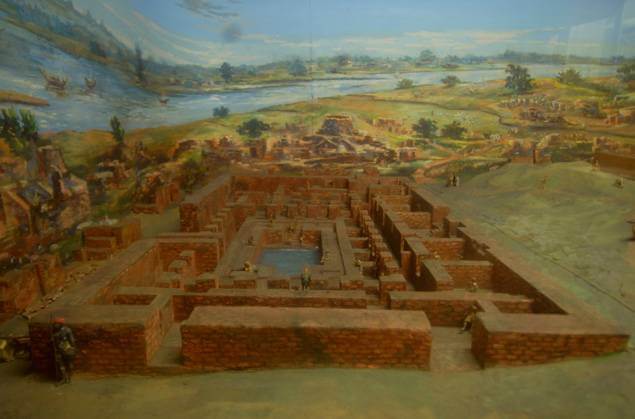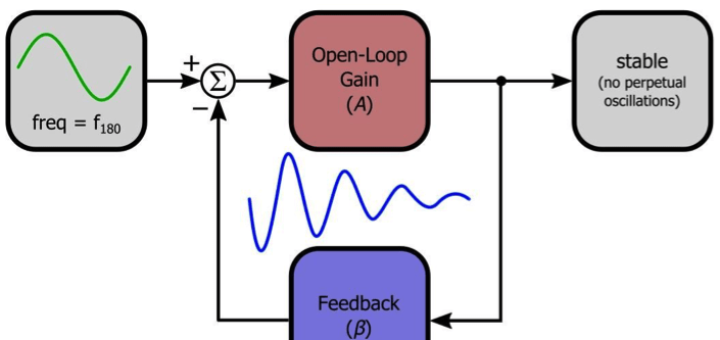Indus Valley Civilization was the first major civilization in South Asia, which spread across a vast area of land in present-day India and Pakistan (around 12 lakh sq.km).
The time period of mature Indus Valley Civilization is estimated between BC. 2700- BC.1900 ie. for 800 years. But early Indus Valley Civilization had existed even before BC.2700.
Features of Indus Valley Civilization
- BC. 2700- BC.1900 ie for 800 years.
- On the valleys of river Indus.
- Also known as Harappan Civilization.
- Beginning of city life.
- Harappan Sites discovered by – Dayaram Sahni (1921) – Montgomery district, Punjab, Pakistan.
- Mohanjodaro discovered by – R. D. Banerji – Larkana district, Sind, Pakistan.
- The city was divided into Citadel(west) and Lower Town(east).
- Red pottery painted with designs in black.
- Stone weights, seals, special beads, copper tools, long stone blades etc.
- Copper, bronze, silver, gold present.
- Artificially produced – Faience.
- Specialists for handicrafts.
- Import of raw materials.
- Plough was used.
- Bodies were buried in wooden coffins, but during the later stages ‘H symmetry culture’ evolved where bodies were buried in painted burial urns.
- Sugar cane not cultivated, horse, iron not used.
Indus Valley Sites and Specialties
HARAPPA
- Seals out of stones
- Citadel outside on banks of river Ravi
MOHENJODARO
- Great Bath, Great Granary, Dancing Girl, Man with Beard, Cotton, Assembly hall
- The term means ” Mount of the dead”
- On the bank of river Indus
- Believed to have been destructed by flood or invasion(Destruction was not gradual).
CHANHUDARO
- Bank of Indus river. – discovered by Gopal Majumdar and Mackey (1931)
- Pre-Harappan culture – Jhangar Culture and Jhukar Culture
- Only cite without citadel.
KALIBANGAN
- At Rajasthan on the banks of river Ghaggar, discovered by A.Ghosh (1953)
- Fire Altars
- Bones of camel
- Evidence of furrows
- Horse remains ( even though Indus valley people didn’t use horses).
- Known as third capital of the Indus Empire.
LOTHAL
- At Gujarat near Bhogava river, discovered by S.R. Rao (1957)
- Fire Altars
- Beside the tributary of Sabarmati
- Storehouse
- Dockyard and earliest port
- double burial
- Rice husk
- House had front entrance (exception).
ROPAR
- Punjab, on the banks of river Sutlej. Discovered by Y.D Sharma (1955)
- Dog buried with humans.
BANAWALI
- Haryana
- On banks of lost river Saraswathi
- Barley Cultivation.
DHOLAVIRA
- Biggest site in India, until the discovery of Rakhigarhi.
- Located in Khadir Beyt, Rann of Kutch, Gujarat. Discovered by J.P Joshi/Rabindra Singh (1990)
- 3 parts + large open area for ceremonies
- Large letters of the Harappan script (signboards).
The religion of Indus Valley People
- Pashupathi Mahadev (Proto Siva)
- Mother goddess
- Nature/ Animal worship
- Unicorn, Dove, Peepal Tree, Fire
- Amulets
- Idol worship was practised ( not a feature of Aryans)
- Did not construct temples.
- The similarity to Hindu religious practises. (Hinduism in its present form originated later)
- No Caste system.
Indus Valley Society and Culture
- The systematic method of weights and measures ( 16 and its multiples).
- Pictographic Script, Boustrophedon script – Deciphering efforts by I. Mahadevan
- Equal status to men and women
- Economic Inequality, not an egalitarian society
- Textiles – Spinning and weaving
- 3 types – burial, cremation and post-cremation were there, though burial was common.
- Majority of people Proto-Australoids and Mediterranean (Dravidians), though Mongoloids, Nordics etc were present in the city culture. Read more on races of India.
Reasons for Decline of Indus Valley Civilization
Though there are various theories, the exact reason is still unknown. As per a recent study by IIT Kharagpur and Archaeological Survey of India, a weaker monsoon might have been the cause of the decline of Indus Valley Civilization. Environmental changes, coupled with a loss of power of rulers (central administration) of Indus valley to sustain the city life might be the cause (Fariservis Theory). There might be a resource shortage to sustain the population, and then people moved towards south India. Another theory by Dr Gwen Robbins Schug states that inter-personal violence, infectious diseases and climate change had played a major role in the demise of the Indus Valley Civilization.
Other theories:
- Aryan Invasion: Motimer Wheeler
- Tectonic Movements/ Flood – Robert Raikes
- Change of course of river Indus – Lambrick.




